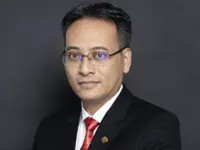MEME researcher Wong Ee Phin is in the midst of adapting a field-hormone extraction method to enable on-the-spot hormone analysis in the Malaysian rainforest. This means researchers will actually be able to compare things like stress levels and health conditions of elephants living deep within the nurtient-sparse rainforest, as well as those living at the interface between forest and human-dominated landscapes. MEME (Management and Ecology of Malaysian Elephants), a collaboration between the University of Nottingham Malaysia Campus and the Department of Wildlife and National Parks is studying elephant populations in and around the Belum-Temengor rainforest.
WHAT happens to translocated elephants that have been moved hundreds of kilometres away from their homes, due to human-elephant conflict? A number of things: some elephants might find a new herd, some might try finding their way back to their home, whilst others might just wander alone, like Mak Jalong, an elephant that was translocated from her home a year ago, due to crop-raiding behaviour.
Only time will tell whether she integrates to become a reproductively healthy member of the local elephant population. But now, for the first time since translocation began in the 1970s, a systematic effort is being made to keep track of what happens to elephants once they are released.
Already a subscriber? Log in
Save 30% OFF The Star Digital Access
Cancel anytime. Ad-free. Unlimited access with perks.





